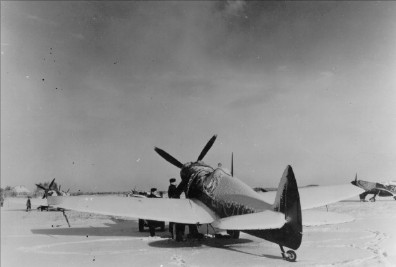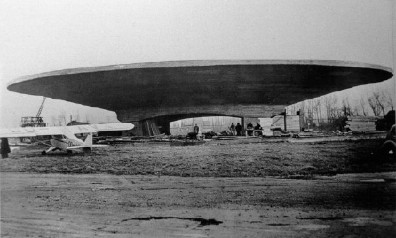From reserve airfield to recreational airfield.
From September 4, 1939, Belgian soldiers started the construction of a
reserve airfield on the
territory of Grimbergen. Fifty-eight hectares of fertile farmland, located between the
Oyenbrugstraat and Lintkasteelstraat were drained, leveled and covered with grass.
In thedays of May 1940, a few Belgian squadrons used the airfield. Their Fairey
Fox and Fiat CR.42 turned out to be no match for the German Luftwaffe. The field was already
occupied on May 18. Two months later, the German "Bauleitung" started with the
expansion of the airport. The "civil engineer Hunzinger" signed the plans for the "Fliegerhorst
Grimbergen" in his office at the Grimbergen tram station.
More and more areas
were confiscated and farmers were requisitioned for the groundworks. New roads and land were
constructed or improved (Oyenbrugstraat, Gasthuispachthofstraat, ...), the field was adapted to
receive the well-equipped Luftwaffe. A Belgian contractor was even obligated to build and
to install a modern water supply network at the airfield.
Grimbergen would especially be known for being the homebase to the "Wekusta 26" and the
"Jagdgeschwader 26". The first unit took photos and observations of the weather above
Britain. This data was then forwarded to the Luftwaffe headquarters in the
Brussels Palace Hotel. JG26 was an elite unit, equipped with Focke Wulf Fw190.

On April 10, 1944, a number of houses near the airfield were damaged by incendiary bombs,
there were three deaths.
On June 6, 1944, the Allies landed in Normandy, on September 3 1944,
Grimbergen was liberated. Three days later, an advance guard of the 122 Wing arrived at Grimbergen
(RAF airfield code B-60). Three squadrons of the 122 Wing were tasked to fly
to make supplying and the retreating of the German troops more difficult. The operations in Arnhem
were also supported from Grimbergen, dozens of C-47s were stationed there. On September 28 1944,
three Tempest squadrons (New Zealanders) took the place of the Mustangs. The 132 "Norwegian" Wing
was also Grimbergen from October 6 to December
22, this time with Spitfires. Many pilots were
received by local families. After fifty years, these pilots still talk about the
hospitality of the local residents. They could enjoy warm living rooms as their clammy
tents were rarely used here.

On January 1 1945, the airfield was attacked by German fighter planes. Multiple fighters
were shot down by anti-aircraft guns, one Focke Wulf Fw 190 hit a house in the Schapenbaan. The 131
"Polish" Wing was based at Grimbergen from January 1945 to April 1945. The
Polish could also count on the sympathy of the local residents. The airfield was used by the
americans
starting from May 1945. They stored army equipment there (including Sherman tanks) to get sold or
sent back to the United States.
Starting from May 1946, the military started to return parts
of the airfield to civil authorities. They quickly decided make Grimbergen an important tourist
airfield. Sport and Tourism planes would then need to make less use of the Melsbroek International
Airport. As early as 1946, the first gliders and tourism planes were able to fly and land at
Grimbergen. In November 1947, the two unique round sheds became officially inaugurated by Minister
of Transport Achille Van Acker. The round, concrete structures are still unique in Belgian
architecture. On the occasion of Open Monuments Day on September 12 1999 and September 8 2002, they
were opened to the general public.

As part of the state reform, the airport was transferred from the "Regie der Luchtwegen" to the
Flemish Community on January 17 1989 . The non-profit organization Recreational Airport
Grimbergen, thanks to a lot of volunteer work, is currently the financially profitable exploitation
of the
airport.
Frans Van Humbeek
Photos and testimonials about Grimbergen airfield and about the history of the
National Airport (Haren/Evere-Melsbroek-Zaventem) are credited to Frans VAN HUMBEEK,
Kruipstraat 36, 1850 Grimbergen (Tel : 02/269 96 65) or via email
to
frans.van.humbeek@pandora.be